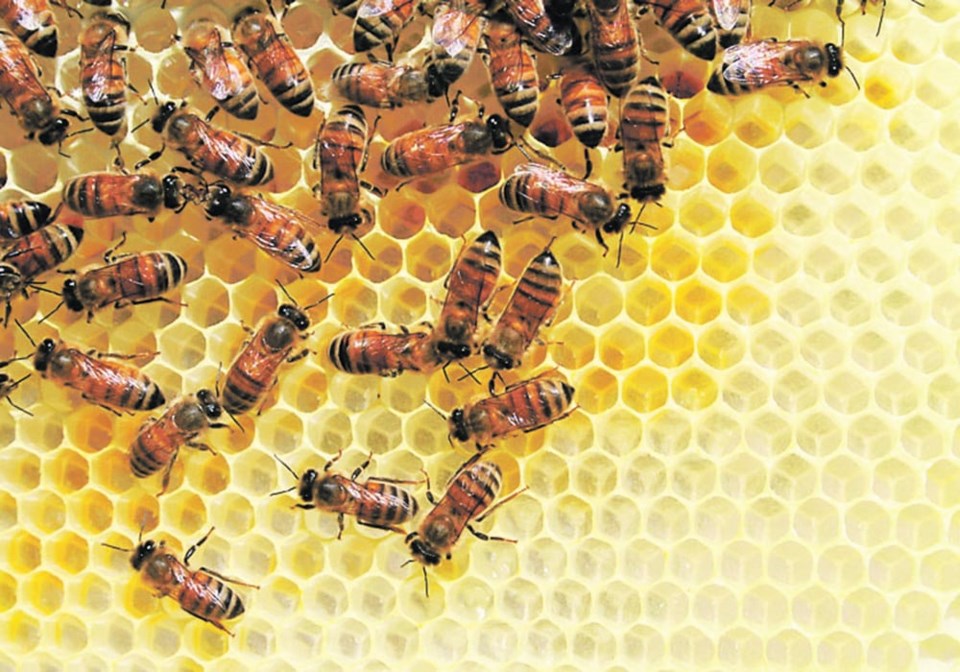WESTERN PRODUCER — The days leading up to the first week of May will determine the level of losses faced by prairie beekeepers as they leave winter behind, said an industry leader.
“Now, the big issue is how the spring unfolds, and this is when beekeepers will start losing bees if spring doesn’t come pretty quick,” said Rod Scarlett, executive director of the Canadian Honey Council. “We need some pollen to be on the trees and plants. The bees need to fly and the weather’s got to warm up.”
Scarlett estimated April 19 total losses of bees across the three prairie provinces have so far averaged 20 to 25 percent.
“For some beekeepers, it is OK. For others, it really pushes the margins,” he said.
“It depends a little bit on how you’re restocking. Did your young colony survive? Did your nucleus colony survive? Do you have to buy package bees? Are you going to have to buy bees from other beekeepers? So, the economics depends on each operation.”
Canadian beekeepers at this time last year were facing record-breaking average losses of 45 percent of their colonies across the country because of high levels of varroa mites over the winter, said Scarlett. However, many of the mites not only died with the hives they killed, but people also worked hard to implement anti-varroa measures such as splitting colonies to help dilute the proportion of mites compared to bees, he said.
“And so, I think the expectation going into (this) winter was that maybe we might do better than average. We might have a very successful year on the Prairies for overwintering, and it just doesn’t seem to be as successful as I think maybe beekeepers were hoping.”
Although conditions this spring have been good, temperatures haven’t been consistently warm enough across the Prairies, he said. Beekeepers have continued to face forecasts into late April of cold periods as low as – 12 C in several areas that have included snow, he added.
Temperatures need to warm to at least 10 C so bees can fly and queens can start to brood and lay eggs, said Scarlett.
“We’re getting this 15 C above and then 3 C above, and that differentiation slows the plants from creating the pollen and slows the bees from going out,” he said.
“It just creates a problem, so I think for the most part — we call it a dwindle — that dwindle in the colonies between now and maybe May 1 or the first week of May is really going to be crucial to determine how, really, our overwintering numbers are.”
Alberta has about 48 percent of Canada’s honey industry, said Lorne Prins, vice-president of the Alberta Beekeepers Commission. Statistics gathered by the provincial government placed last year’s average losses at 52 percent, he said.
“Anecdotally, I think it was closer to 60, and then this year, we’re probably running between 25 and 30, so literally, from my personal experience and based on what I’m hearing, we’ve experienced half the losses of last year.”
Honey producers in the province are generally satisfied with the overwintering success of their colonies, said Prins.
“We had conversations last year where we were dealing with a crisis, and I don’t think that’s the case this year,” he said.
“What I’m hearing is overwintering losses are hovering around the 30 percent average, with maybe a few operations or a few areas in the province with higher losses, and there may be some areas that experienced lower than that.”
Losses of 30 percent are within the five-year average for Alberta, said Prins.
“If you look at a 20-year trend, then it’s still a high loss, but 30 percent is kind of considered the threshold of what’s manageably recoverable.”
Although he partly attributed the losses to varroa mites and the viruses they carry, starvation because of extended cold weather through March was also a factor.
“So, you see hives that have survived most of winter, and then they just run out of gas in March, April if you are not able to get some feed into them. I think you end up finding colonies that the queen fails and then the colony just falls apart or just collapses.”

